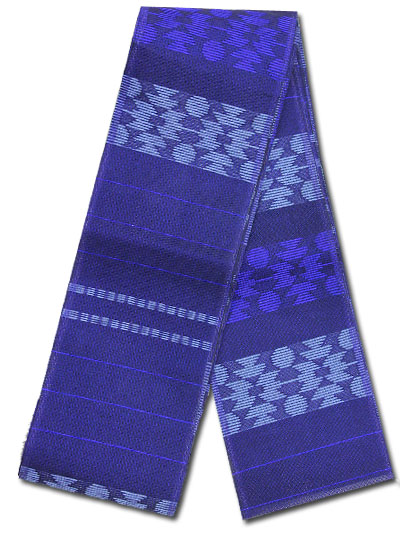Native to the Akan people of southern Ghana, kente cloth has also become popular amongst the Akans of the Ivory Coast, and in many other West African countries. Kente cloth is probably the best known of all African cloths, characterised by its bright colours and bold, geometric designs.
 Crafted from interwoven strips of coloured cloth, the design originates from the Ghanaian village of Bonwire. Legend has it that two brothers – Kurugu and Ameyaw – were out hunting when they came across a spider spinning its web and wanted to replicate the same beauty that they had seen in this web. When they returned home, they created the first kente cloth from black and white raffia fibres and presented it to the Ashanti king. While he was impressed, he stated that it would be more impressive should there be additional colours included – and so, using tree bark and other natural sources, the inclusion of further colours in kente cloth began.
Crafted from interwoven strips of coloured cloth, the design originates from the Ghanaian village of Bonwire. Legend has it that two brothers – Kurugu and Ameyaw – were out hunting when they came across a spider spinning its web and wanted to replicate the same beauty that they had seen in this web. When they returned home, they created the first kente cloth from black and white raffia fibres and presented it to the Ashanti king. While he was impressed, he stated that it would be more impressive should there be additional colours included – and so, using tree bark and other natural sources, the inclusion of further colours in kente cloth began.
The colours in kente cloth aren’t just there to look attractive, though – far from it. In fact, West African Cloth colours are all very relevant. Every single colour that is used has its own symbolic meaning, as detailed below.
Black: spiritual energy and maturity, as well as funeral rites and mourning.
Blue: love, harmony, togetherness and peace.
Maroon: healing, plus the colour of Mother Earth.
Purple: normally worn by women, associated with femininity.
Pink: also represents feminine qualities, including mildness.
Red: sacrificial rites, bloodshed and death, but also spiritual and political moods.
Gold: wealth in a number of forms, namely high status, monetary wealth and royalty, but also fertility and spiritual purity.
Yellow: similar to the attributes associated with gold, but also including beauty and preciousness.
Green: growth – both spiritual growth, and also relating to the land, harvest, vegetation and crops.
Grey: symbolises ash, as well as cleansing and healing rituals.
Silver: associated with the moon, as well as peace, purity and joy.
White: festive occasion, cleansing rites and pureness.
Now, when you choose your West African Fabrics, you will be able to better understand what the colours truly represent, so you can find the perfect cloth for any occasion.


